|
|
TODAY.AZ / Politics
Historical and cultural sites in Azerbaijan's liberated territories
28 December 2020 [11:20] - TODAY.AZ
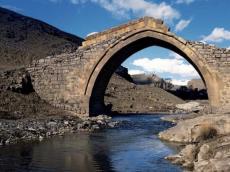
By Azernews
By Laman Ismayilova
The Cultural Ministry continues to provide insight into historical and cultural sites located on Azerbaijan's territories that have been occupied by Armenia for almost 30 years.
The initiative is carried out through the project "Karabakh is the cradle of our culture" which aims at spreading facts about Armenian vandalism against Azerbaijan.
Uzeyir Hajibeyli’s House-Museum in Shusha
In 1959, a house-museum of the great Azerbaijani composer, founder of our national professional music, world-famous Uzeyir Hajibeyli was founded in the house where he spent his childhood in Shusha.
Items from the composer's early years, manuscripts of his works, numerous documents, and photographs depicting his life and creativity were displayed in the museum's exposition.
Uzeyir Hajibeyli’s anniversaries and jubilees had been constantly commemorated in the museum at national level. In 1985, UNESCO solemnly marked the 100th anniversary of Uzeyir Hajibeyli’s birth. The guests invited from different countries of the world visited Uzeyir Hajibeyli’s House-Museum in Shusha, where jubilee was celebrated.
After occupation of Shusha by Armenia the museum discontinued its function. The museum's exhibits are preserved in the funds of Uzeyir Hajibeyli's house-museum in Baku.
One of the most valuable examples brought to Baku is a handful of Shusha soil taken from the bottom of Uzeyir Bey's favorite pear tree in the museum yard.
Haji Alakbar Mosque
Haji Alakbar Mosque in Fuzuli is one of the first works of Karbalayi Safikhan Garabaghi. A stone inscription bearing the words "This is the Architect Karbalayi Safikhan Garabaghi’s work" was found at the entrance door. Date of construction of the Mosque – the year 1307 Hegira calendar was also noted on inscription. This date corresponds to 1889-1890 AD. During the occupation of the Fuzuli city by the Armenian Armed Forces in 1993, Haji Alakbar Mosque was rendered useless.
Palace of Panahali Khan
The monument, known as the "Palace of Panahali Khan", is located near the city of Agdam and is a historical and architectural monument of the 18th century, from which today only ruins remain.
Sharifan Tomb
The historical monument is located in Sharifan village of Zangilan region, on the right bank of the Hakari river. Only the remains of the lower part of the ancient tomb have survived. The upper part of the tomb was destroyed.
The Sharifan tomb is considered to be a monument built at the turn of the XIII-XIV centuries.
Gargabazar Mosque
Shah Abbas Mosque in Fuzuli is described in scientific literature as Haji Qiyaseddin Mosque as the door of the mosque bears an inscription as "This mosque was constructed by Haji Qiyaseddin, the kind creature of Great Allah, in Hegira 1095". This date corresponds to AD 1683-1684.
The mosque is built on a rocky hill in the center of the village. The caravanserai, built in the same period, is located to the south of the hill. The architectural analysis of the construction of the caravanserai and the mosque suggests that both monuments were built by the same architect.
After the occupation of Fuzuli by the Armenian armed forces in 1993, the mosque was destroyed.
Varazgun Temple
Varazgun Temple is an ancient Albanian monument located in Lachin. Around the temple are the ruins of a village called Varazkhan.
It is believed that the first name of the temple was Varazkhan or Varazgun. The monument was built in the II-V centuries during the Caucasian Albania period and ruins has remained until today.
Remains of an ancient Albanian cemetery dating back to the 7th century, as well as coins belonging to the 16th century Safavid state had been found in the area of the temple built in the highland.
Khubyarli Tombs
The 15th century "Round" tomb Octagonal mausoleum, the 16th Octagonal mausoleum have been destroyed by the Armenian vandals during the occupation of Jabrayil region in 1993.
However, these historical monuments have been completely restored by a special repair brigade.
Bashikesik Dome
The dome built in the 13th-14th centuries located in Daghtumas village of Jabrayil region was named "Bashikesik dome"(Headless dome) due to its open ceiling.
Despite the restoration of the historical monument before the occupation, in 1993 several parts of the walls of the dome were destroyed by the Armenian armed forces.
Mirali Mausoleum
Mirali Mausoleum is a tower-shaped mausoleum rising on a hill in Ashagi Veysalli village of Fuzuli region.
According to its construction techniques, it is considered that this monument was built in the 14th century during the Ilkhanid period.
Shikhlar Tomb
Shikhlar Tomb (Circular Tomb) is located near Shikhlar village of Jabrayil region.
The upper part of the tomb was destroyed during Armenian occupation in 1993.
Beshikdag Church
The church is located on Beshikdag Mountain in Aghdam. The church, built in the style of Caucasian Albanian architecture, dates back to the 4th-7th centuries.
Damirovlu Pir Temple
The monument belonging to the material and cultural heritage of Caucasian Albania, is located in Karykyshlak village of Lachin district and belongs to XI century.
Since Lachin region has been occupied by Armenia in1992, the current condition of the monument is unknown.
Khudavang Monastery Complex
The complex of Khudavang or Dedeveng complex located in the Vang village of Kalbajar region, on the Terterchay river’s left bank, is one of the largest and most beautiful examples of Azerbaijan’s Christian architecture.
Many construction inscriptions have survived in the Khudavang Complex. A number of names indicated therein such as Arzu, Tursun, Seyti, Hasan, Avag, Shams, Altun, Aghbuh, Garagoz, etc. should be considered of exact providing the builders’ Turkic identity.
After the occupation of the Kalbajar region by the Armenian armed forces in 1993, Khudaveng Monastery Complex was presented to the world as an Armenian monument.
Lekh Castle
Lekh Castle is located in the territory of Qanlikend village in Kalbajar, which was occupied by Armenia in 1993.
The castle, built on a high mountain peak, was built in the 13th-14th centuries for defensive purposes.
Red Monastery
The historical monument located in Gozlu village in Kalbajar region was built in 1224. The monument, which belongs to Albanian Christian architecture, consists of a church, narthex, cell and other buildings.
This historical monument has been under Armenian occupation since 1993 and is on the verge of destruction.
Khojaly Tomb
One of the monuments erected in the 14th century is Khojaly tomb built of the hewn white stones in Khojaly mound. As the stone coating of the Khojaly tomb peeled off, the monument had an unusual appearance.
Lalazar Bridge
Lalazar Bridge was built in 1867 on the river Bargushad passing through Aliguluushagi village in Gubadli region.
Gutlu Musa Masoleum
Gutlu Musa Masoleum is located in Khachindarbatli village in Aghdam region. The inscription on the entrance door of the Khachindarbatli monument shows that it was built in 1314 by the master Shahbenzar on the tomb of Musa oglu Kutlu.
The current condition of the monument is unknown due to the occupation of the Aghdam region by Armenia in 1993.
Agoghlan Temple
Agoghlan Temple is an Albanian monastery belonging to the 5th-6th centuries.After the occupation of Lachin region by Armenia in 1992, the architectural structure and interior of the monument were changed and renamed "Tsitsernavank".
Shahbulag Fortress
Shahbulag Fortress (castle) was built near the city of Aghdam in 1750-1752 at the request of the Karabakh khan Panah-Ali Khan.
After the occupation of the Aghdam region by the Armenian armed forces, Shahbulag Fortress became the most Armenianized one of our monuments. Recently, the fortress was restored. Now is used as a church.
Memer Village Mosque
Memer Village Mosque belonging to Gubadli region was built in the 18th century. After the occupation of Gubadli region by the Armenian armed forces in 1993, the mosque was completely destroyed.
Gurjulu Mausoleu
Gurjulu Mausoleu is a historical and architectural monument of the 18th century located in the territory of Gurjulu village in Gubadli region.
The current condition of the tomb is unknown due to the occupation of the region by Armenian armed forces in 1993.
Kocharli Mosque
Kocharli Mosque is an architectural monument of the 19th century located in Shusha city.
The historical mosque belonging to the palace complex of Bahman Mirza was one of the seventeen mosques operating in Shusha in the late 19th century.
The mosque was burned and destroyed by vandals after the occupation of Shusha by the Armenian armed forces in May, 1992.
Haji Badal Bridge
The archless bridge located in Demirchiler village of Gubadli region was built by Haji Badal on the Aga River in the 19th century
The current condition of this historical monument, which connects 15 villages with the region center, is unknown due to the occupation of Gubadli by the Armenian armed forces.
Hamza Soltan Palace
Palace of Hamza Soltan is located in Husulu village of Lachin region. Oriental architectural traditions were widely used in the construction of the palace, which was supposed to be built in 1761.
After the occupation of Lachin region by the Armenian armed forces, the name of the village was changed, and the Hamza Sultan Palace had been repaired and put into use as a guest house.

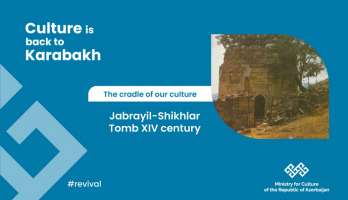
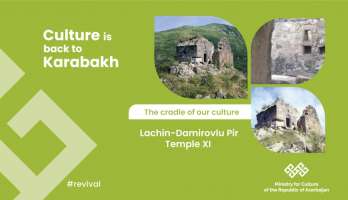
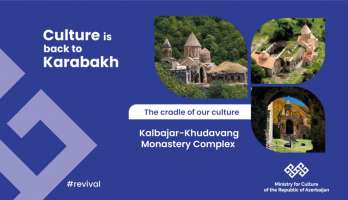
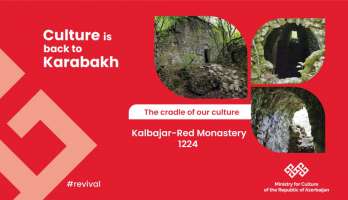
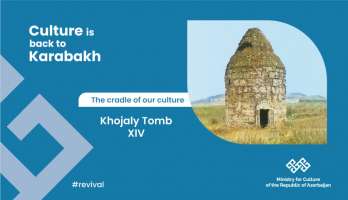
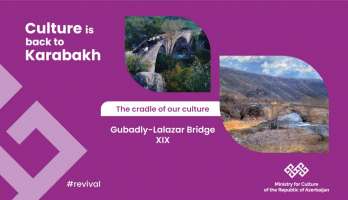
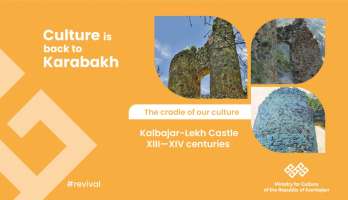
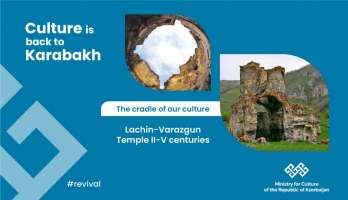
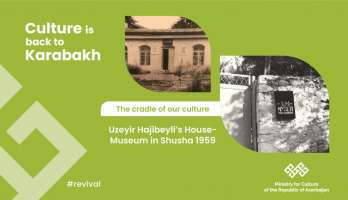
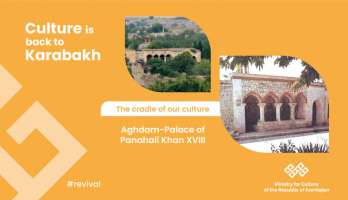
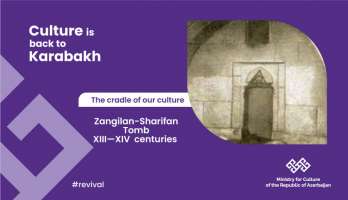
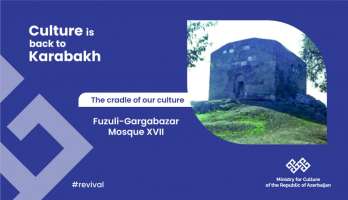
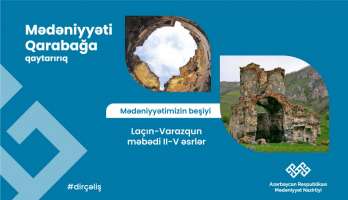
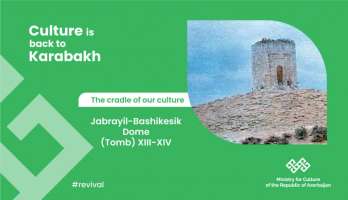
URL: http://www.today.az/news/politics/202032.html
 Print version
Print version
Connect with us. Get latest news and updates.
See Also
- 20 April 2024 [11:10]
Oslo Statement creates new challenges on people development - 20 April 2024 [08:30]
Strengthening Bonds: Turkiye, Azerbaijan forge ahead in economic cooperation - 19 April 2024 [20:44]
What is behind US concern over withdrawal of Russian peacekeepers from Garabagh? - 19 April 2024 [20:39]
G7 makes statement on normalization of Azerbaijan-Armenia relations - 19 April 2024 [15:42]
Armenian provocation on social media ends up being total failure - 19 April 2024 [15:38]
FM Bayramov has telephone conversation with his Palestinian counterpart - 19 April 2024 [15:26]
Azerbaijan's Ombudsman Office hosts training on Right to Access Information - 19 April 2024 [14:42]
Azerbaijani Parliament discusses expanding audit inspections of Accounting Chamber - 19 April 2024 [13:58]
Azerbaijani CEC Chairperson visits Maldives to observe parliamentary elections - 19 April 2024 [13:12]
Azerbaijani Navy and Air Force conduct "Caspian Sky-2024" joint tactical exercise
Most Popular
 South Korea conducts live-fire exercises near borders of DPRK
South Korea conducts live-fire exercises near borders of DPRK
 TikTok closed in Kyrgyzstan
TikTok closed in Kyrgyzstan
 Azerbaijan's AccessBank joins UN Global Compact
Azerbaijan's AccessBank joins UN Global Compact
 Rising fuel expenses signals economic challenges for Azerbaijan
Rising fuel expenses signals economic challenges for Azerbaijan
 Canada's defense spending in next 20 years to amount to $53bn
Canada's defense spending in next 20 years to amount to $53bn
 Scientists create gold foil with thickness of one atom
Scientists create gold foil with thickness of one atom
 Normalisation of Azerbaijan, France relations feasible after end of Macron's rule
Normalisation of Azerbaijan, France relations feasible after end of Macron's rule
